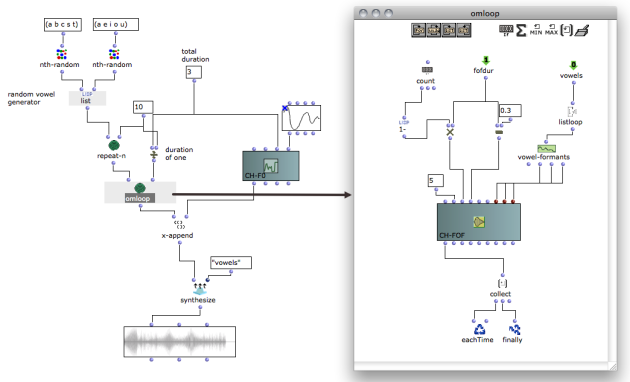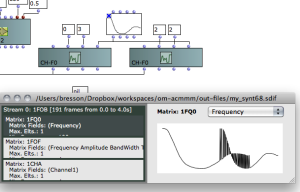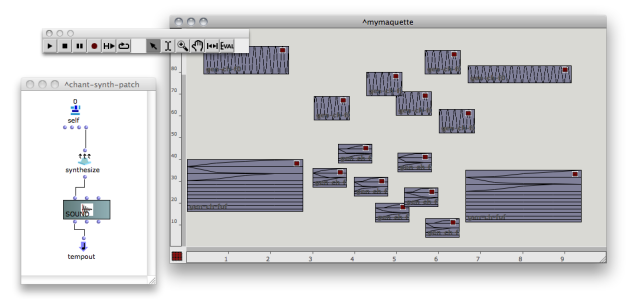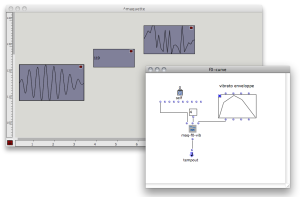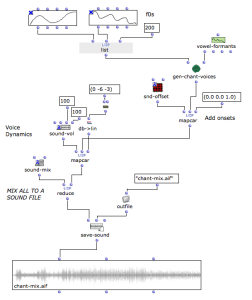Time and Structure
The OM-Chant framework can prove particularly powerful at the time of generating control “phrases” with numerous events, and organizing them in consistent/compositional time structures.
Iterations
Chord-seq
The CHORD-SEQ object can be a convenient way of controlling Chant "singing" notes. It can provide at the same time pitch information for the CH-F0 and temporal information for the rest of the Chant events.
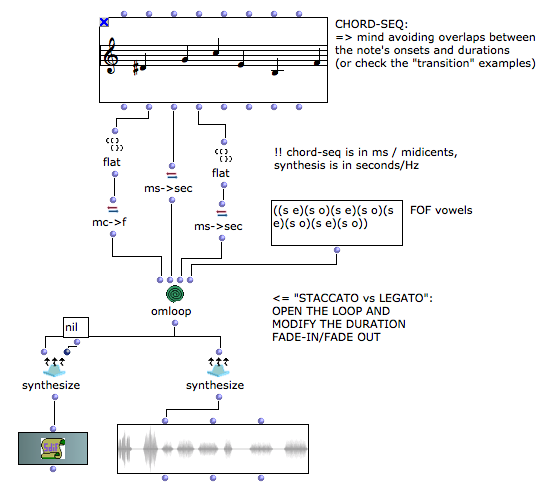
CHORD-SEQ and synthesis parameters are not in the same units :
- CHORD-SEQ pitches are in midicents, while synthesis frequencies are in Hertz (Hz). You can use MC->F to convert from midicents to Hz.
- CHORD-SEQ onsets and durations are in millisecons, while synthesis params are in seconds. Use MS->SEC to convert.
- CHORD-SEQ velocities are in MIDI (0-127) while synthesis amplitudes are generally absolute values between 0.0 and 1.0.
The dur parameter of the Chant event classes can be set as a value in seconds, or as a list (duration fade-in fade-out). Fade in/out allow to "shut" the event down before/after its start and/or end time, and therefore to "separate" the notes played by the Chant synthesizer.
Use fade-in/out on CH-FOF in order to apply this to the FOF amplitudes, or to the CH-F0 in order to use it on the fudamental frequency.
The CR-MODEL object from the OMChroma library can be a concenient and powerful alternative to store and process time and pitch information for the control of the Chant synthesis processes.
The Chant synthesizer does not handle simultaneous or overlapping controls by itself. Successive event's onsets and durations must therefore be carefully checked abd specified. See the section "Transitions" in order to control the transitions and overlapping segments in your OM control patches. |
Maquette
The OM Maquette interface can be used to organize syntheis control objects in advanced temporal/functional structures.
The "synthesis" patch (double-click in the lower-left corner of the maquette editor) then converts the Chant events into a sound at the time of rendering the maquette.
See the "Maquette" section in the OM User Manual.
A number of tools available under the These tools also include utilities to easily handle transitions between events. |
Polyphony (?)
Chant is a monophonic synthesizer creating sounds starting from linear control sequences.
To some extent, the tools presented in the next section for transitions and morphing of events allow to deal with polyphony.
See the "Audio" section in the OM User Manual.
